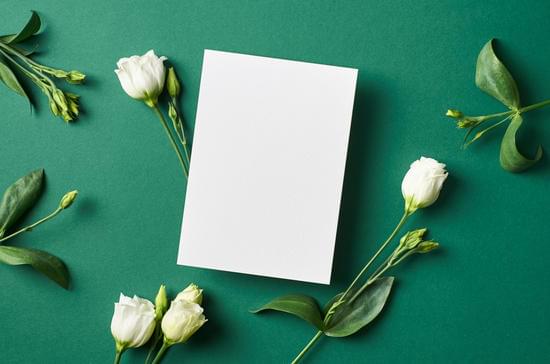Wedding rings hold a special place in various cultures around the world as symbols of love, commitment, and unity between partners. These precious bands are worn on a specific finger, symbolizing a connection that transcends language and borders. In this article, we will delve into the significance of wedding rings in different cultures, exploring the history behind this tradition and the symbolism attached to them.
Throughout history, the exchange of wedding rings has been a customary practice dating back to ancient times. From ancient Egypt to present-day traditions, the act of exchanging rings has evolved with cultural variations and customs. Different countries and religions have unique ways of wearing wedding rings, each with its own symbolic meaning that reflects the values and beliefs of that society.
The choice of finger for wearing a wedding ring is not arbitrary but holds deep significance. The ring finger, often believed to have a direct vein to the heart called the “vena amoris,” is traditionally chosen for wearing wedding bands. Understanding the symbolism behind this choice sheds light on why this finger is considered the most appropriate for displaying lifelong commitment and love through a simple band of metal or gemstone.
History of Wedding Rings
The history of wedding rings dates back thousands of years, with evidence of their use in ancient Egypt, Greece, and Rome. In these cultures, the ring was seen as a symbol of eternity and everlasting love, due to its circular shape with no beginning or end. The Romans also believed that the ring finger had a vein that ran directly to the heart, which is why they chose this finger for the wedding ring.
Throughout history, wedding rings have evolved in terms of materials and designs. In ancient times, rings were often made of simple metals like iron or copper. As civilizations progressed, gold and silver became popular choices for wedding rings among the wealthy and royalty. Today, modern couples have a wide variety of metals to choose from, including platinum, titanium, and even alternative materials like silicone.
In addition to the materials used for wedding rings, the symbolism attached to them has also evolved over time. While the basic concept of love and commitment remains consistent across cultures, there are now additional layers of meaning attached to wedding rings. Some couples choose intricate designs or incorporate gemstones into their rings to represent personal values or milestones in their relationship.
| Wedding Ring Material | Symbolism |
|---|---|
| Gold | Wealth and prosperity |
| Platinum | Elegance and endurance |
| Titanium | Strength and durability |
Cultural Differences
In different countries and among various religions, the tradition of wearing wedding rings holds a special significance. From Western cultures to Eastern traditions, the way wedding rings are worn can vary greatly. In some countries, such as the United States and most European nations, the wedding ring is typically worn on the fourth finger of the left hand. However, in other cultures like India, it is more common to wear the wedding ring on the right hand.
Eastern vs. Western Traditions
In Western cultures, it is a widely accepted custom to wear the wedding ring on the left hand’s fourth finger due to the belief in the “vena amoris” or vein of love that runs directly from this finger to the heart. On the other hand, in many Eastern cultures like India and Russia, wearing a wedding ring on the right hand is more common.
This practice is often tied to specific cultural or religious beliefs that dictate which hand should be adorned with a wedding ring.
Religious Practices
Within various religions, there are also differences in how wedding rings are worn. For example, in Christian weddings, it is customary for both partners to wear their rings on their left hands after exchanging vows.
In Jewish ceremonies, however, some couples follow the tradition of wearing their rings on their right hands during the ceremony before switching them over to their left hands after being officially married. Understanding these cultural and religious differences adds depth to the symbolism behind wearing a wedding ring and highlights how diverse traditions can be when it comes to such a universal symbol of love and commitment.
Symbolism of the Ring Finger
The tradition of wearing wedding rings dates back centuries and is deeply rooted in various cultures around the world. The significance of these rings goes beyond just being a piece of jewelry; they symbolize the eternal bond and commitment between two individuals in love. One might wonder, why specifically the ring finger is chosen for wearing these symbols of love and unity.
There are several theories as to why the ring finger is considered special when it comes to adorning wedding rings. One popular belief stems from ancient Egypt, where it was thought that the vein in the ring finger (the fourth finger on the left hand) ran directly to the heart, making it the most suitable place to wear a symbol of love and devotion. This idea has carried through history and is still widely accepted today.
In many Western cultures, including North America and Europe, the tradition of wearing wedding rings on the left ring finger originated from Roman customs. During a wedding ceremony, the groom would place the ring on his bride’s left hand to signify his ownership and protection over her.
This practice eventually evolved into both partners exchanging rings as a sign of mutual love and commitment. While this tradition is prevalent in many countries, it’s interesting to note that there are variations in cultural practices regarding which hand or finger wedding rings are worn on across different regions globally.
- – In some Eastern European countries like Russia and Bulgaria, wedding rings are traditionally worn on the right hand.
- – In certain Asian cultures such as India, couples may wear their wedding rings on their right hands during the engagement period before moving them to their left hands after marriage.
Engagement Rings vs Wedding Bands
When it comes to the world of matrimonial jewelry, engagement rings and wedding bands play a significant role in symbolizing love and commitment. Engagement rings are typically given during the proposal as a symbol of intent to marry, while wedding bands are exchanged during the marriage ceremony to signify the couple’s union. While both types of rings hold sentimental value, they serve different purposes in the context of a relationship.
The engagement ring is traditionally worn on the fourth finger of the left hand, known as the ring finger. This practice dates back to ancient times when it was believed that this finger contained a vein that led directly to the heart, symbolizing love and commitment. On the other hand, wedding bands are also worn on this same finger but are usually placed on after the wedding ceremony to signify the official union between partners.
In terms of design, engagement rings often feature a prominent center stone such as a diamond or gemstone, symbolizing the promise of marriage. Wedding bands, on the other hand, are usually simpler in design and are meant to represent eternity and unity. Some couples choose to have matching wedding bands to symbolize their connection and commitment. Ultimately, both types of rings contribute to creating a timeless tradition that celebrates love and partnership.
| Engagement Rings | Wedding Bands |
|---|---|
| Given during proposal | Exchanged during marriage ceremony |
| Feature center stone | Simpler in design |
| Symbolize promise of marriage | Represent eternity and unity |
Choosing the Perfect Ring
When it comes to choosing the perfect wedding ring, there are several factors that couples should consider to ensure they find the ring that best represents their love and commitment. Here are some key considerations to keep in mind:
- Metal Type: One of the first decisions to make when selecting a wedding ring is the type of metal you prefer. Common options include gold (yellow, white, or rose), platinum, and titanium. Each metal has its own unique characteristics, such as durability and color.
- Style: Wedding rings come in a variety of styles, from classic plain bands to intricate designs with diamonds or other gemstones. Consider your personal style and how the ring will complement your everyday wardrobe.
- Budget: Setting a budget for your wedding ring is important, as prices can vary greatly depending on the metal type, style, and any additional features like engraving or gemstones. It’s essential to find a balance between quality and price that fits within your financial means.
In addition to these factors, it’s also crucial to think about any special customization you may want for your wedding ring. Whether it’s adding a personal engraving or incorporating a meaningful symbol into the design, these personal touches can make your ring even more special.
Ultimately, choosing the perfect wedding ring is a highly personal decision that should reflect your unique relationship and tastes. By considering factors like metal type, style, budget, and customization options, you can find a ring that symbolizes your love and commitment in a way that is meaningful to both you and your partner.
Ring Etiquette
When it comes to wearing and caring for your wedding ring, there are certain etiquette guidelines to follow to maintain the significance and symbolism of this precious piece of jewelry. Proper ring etiquette not only ensures that your ring remains in good condition, but also shows respect for the traditions associated with wearing a wedding ring.
Wearing Your Wedding Ring
Traditionally, wedding rings are worn on the left ring finger, also known as the “ring finger”. This custom has been followed in many cultures and societies around the world. The reason behind choosing this specific finger varies across different beliefs and traditions.
Some believe that the vein in the left ring finger is directly connected to the heart, symbolizing love and commitment. However, some cultures do wear wedding rings on the right hand, so it ultimately depends on individual preferences and cultural practices.
Caring for Your Wedding Ring
To ensure that your wedding ring stays beautiful and retains its sentimental value, proper care is essential. Regular cleaning of your ring using mild soap and warm water can help keep it looking shiny and new. Avoid exposing your ring to harsh chemicals or abrasive materials that may damage or scratch it.
Additionally, removing your ring before engaging in activities like swimming or exercising can prevent any potential damage or loss. It’s also a good idea to have your ring inspected by a jeweler periodically to check for loose stones or any necessary repairs. Remember, taking care of your wedding ring is a way to honor its symbol of love and commitment in your relationship.
Ultimately, wearing a wedding ring is a personal choice that reflects one’s commitment to their partner. By following proper etiquette when wearing and caring for your wedding ring, you not only uphold tradition but also show respect for the significance of this timeless symbol of love. Whether you choose to wear it on your left or right hand, what matters most is the love and dedication behind the symbol adorning your finger.
Alternative Ring Placements
In conclusion, the tradition of wearing wedding rings holds a deep significance in various cultures and has evolved over time. From ancient customs to modern traditions, the act of exchanging rings symbolizes unity and commitment between partners. Understanding the history behind wedding rings sheds light on why they are worn on particular fingers and how different countries and religions have unique practices when it comes to this symbolic jewelry.
While the ring finger is commonly chosen for wedding rings due to its historical symbolism, there are also cultures and individuals who opt for alternative placements. Some may wear their wedding rings on different fingers or even on different hands based on personal beliefs or customs. This diversity showcases the richness of traditions around the world and emphasizes that love and commitment can be expressed in various ways.
Ultimately, whether you choose to follow traditional practices or forge your own path when it comes to wearing a wedding ring, what truly matters is the love and devotion that it represents. The significance of this timeless tradition transcends cultural boundaries and serves as a constant reminder of the vows exchanged between partners. No matter which finger you choose to wear your wedding ring on, let it serve as a symbol of your enduring love and commitment to each other.
Frequently Asked Questions
Is It OK to Wear Wedding Ring on Right Hand?
It is not common to wear a wedding ring on the right hand in most Western cultures, as the left hand is traditionally reserved for both engagement and wedding rings. However, some countries and regions may have different customs or beliefs regarding which hand to wear a wedding ring.
Is the Engagement Ring on the Left or Right Hand?
The engagement ring is typically worn on the left hand, specifically on the fourth finger (next to the pinky) of that hand. This tradition has been prevalent in Western cultures for centuries, signifying the connection of love and marriage represented by the engagement and wedding rings.
Which Is a Man’s Wedding Finger?
In most Western cultures, including the United States, a man’s wedding finger is also his left-hand ring finger—the same finger where women wear their wedding bands. This tradition aligns with the belief that this finger contains the “vena amoris” or “vein of love,” connecting directly to one’s heart when wearing a symbol of commitment and love.

I have been involved in marriages for over 20 years helping couples and singles understand more about them.





